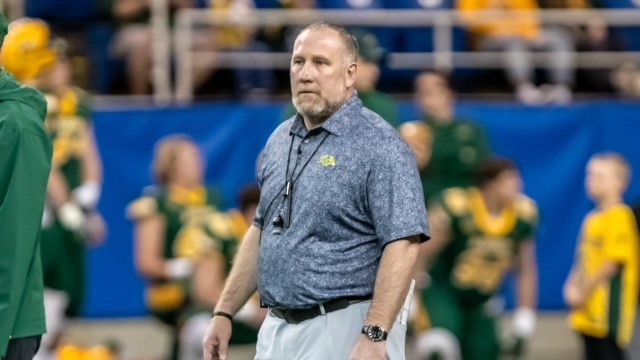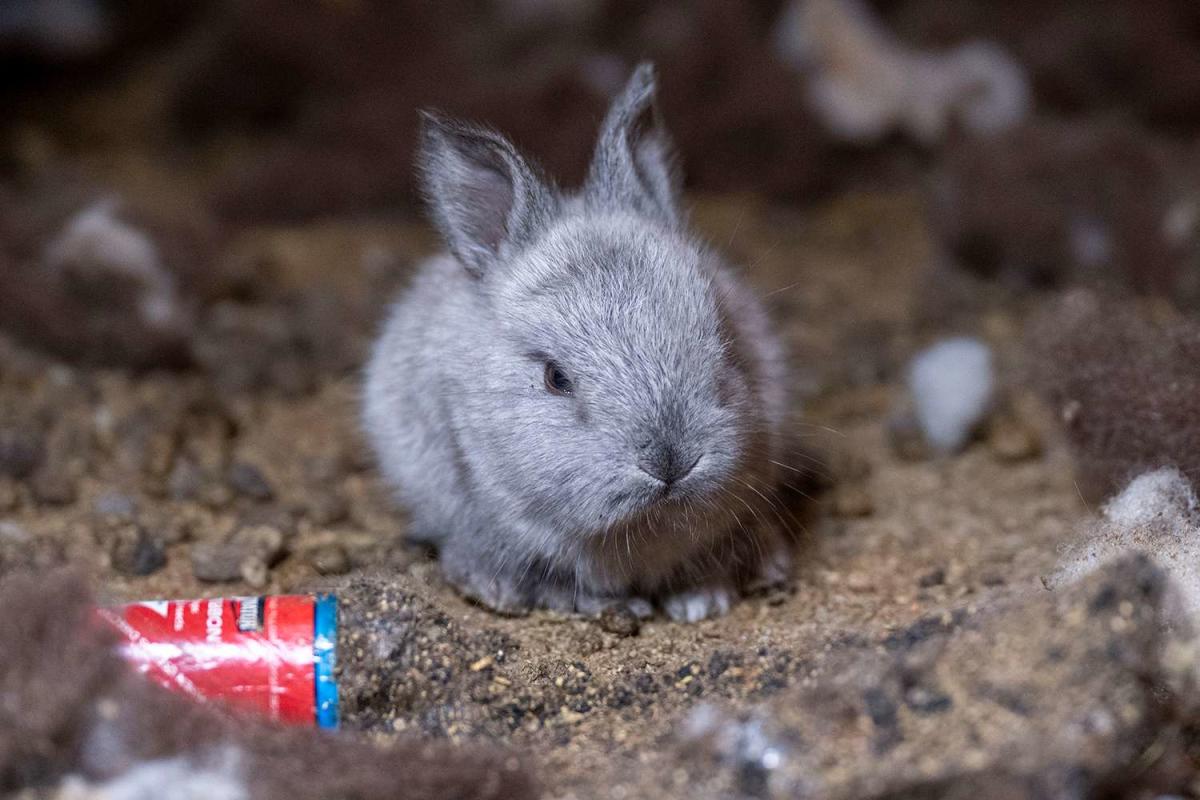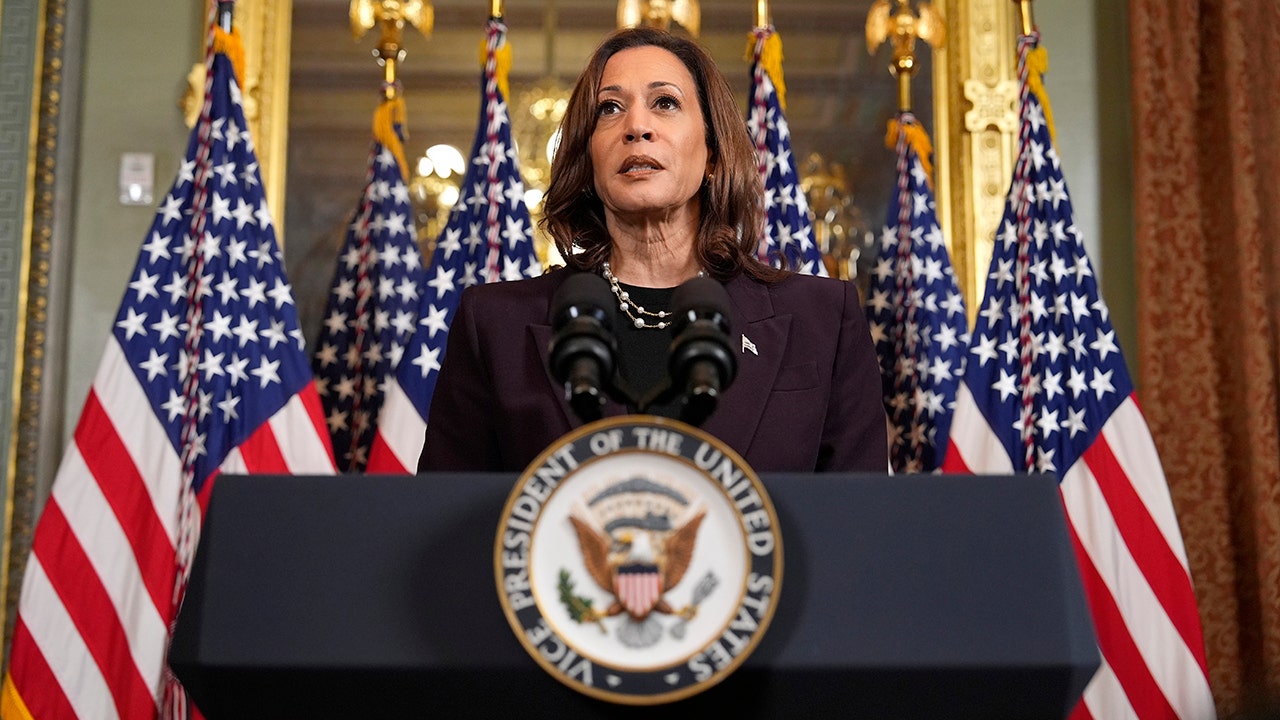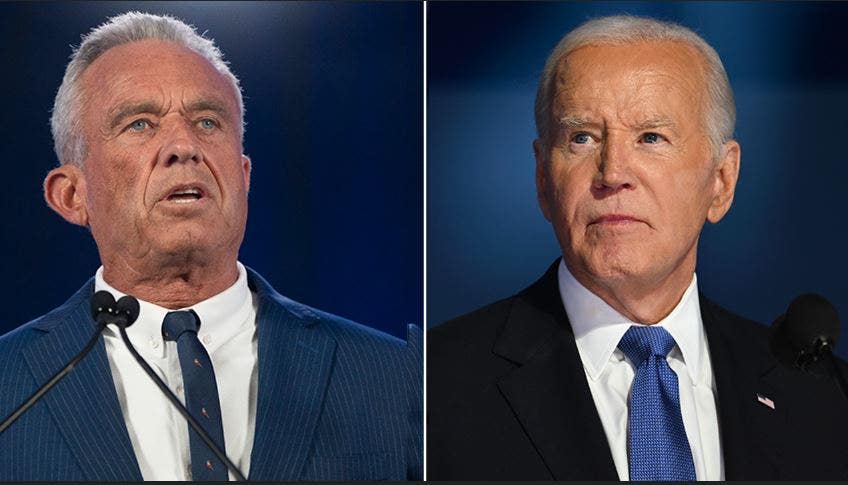Entertainment
For 'Chimp Crazy' director Eric Goode, 'the end justifies the means'
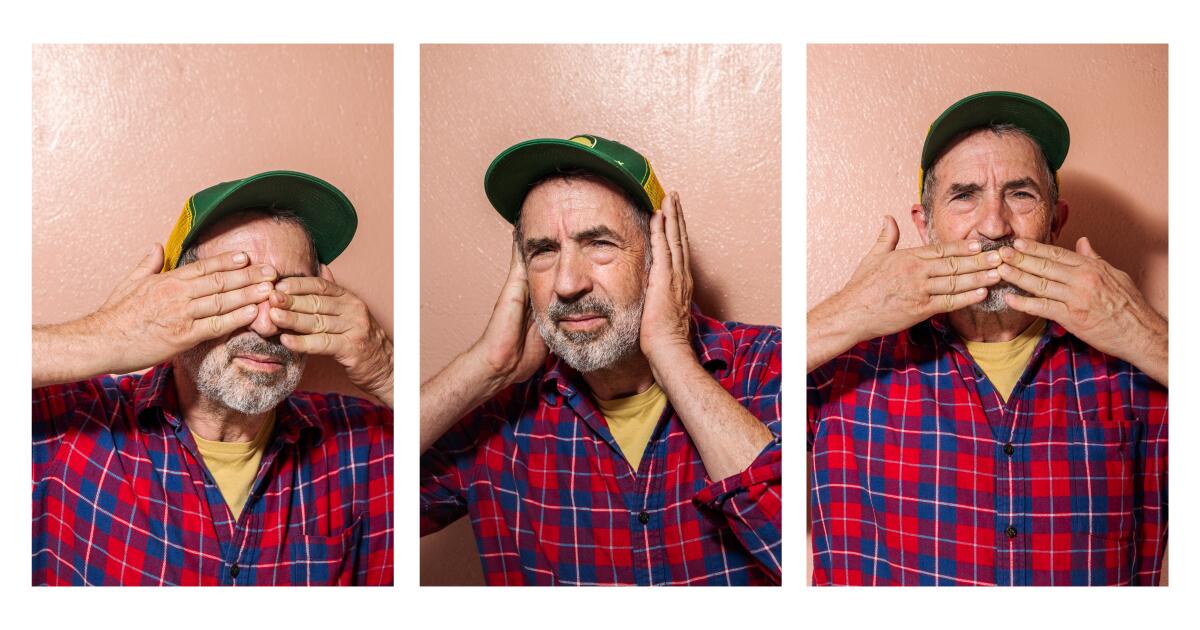
The filmmaker expected his subject to be angry. To cry or scream, curse him out. He had, after all, betrayed her.
For two years, Eric Goode, the producer behind the mega-hit “Tiger King,” had purposefully concealed his identity from the star of his new documentary series. Her name was Tonia Haddix, an Ozarks-based exotic animal broker who was obsessed with chimpanzees. And Goode would ultimately play a key role in having the “humanzee” she considered her child, an ape named Tonka, removed from her home.
Yet when Goode and Haddix finally came together for a filmed face-to-face, she was cordial. Friendly, even. “She was so surprisingly OK with it,” the director, 66, recalls now. “Almost to the degree where she felt more important because it was me.”
In fact, Haddix allowed the production’s cameras to trail her for another year and a half, culminating in “Chimp Crazy,” the four-part docuseries that premiered on HBO and Max this month. Now that the program is out, however, Haddix — who did not respond to multiple inquiries from The Times — is publicly saying she never would have participated if she’d known from the outset that it was a Goode production. Critics, too, have called the series’ ethics into question, voicing concerns about what standards should apply to nonfiction filmmakers, especially those making series with high entertainment value.
“Chimp Crazy’s” main subject, Tonia Haddix.
(HBO)
Goode admits he doesn’t know how he identifies: Journalist? “I don’t think so.” Animal rights activist? “No. I’m more of an animal welfare guy.” He wasn’t even a filmmaker before “Tiger King.”
Goode does not necessarily feel obligated to follow the educational or ethical guidelines by which conservationists and journalists abide. Without these “indoctrinated boundaries,” as he calls them, he has the freedom to find — or, in the case of “Chimp Crazy,” provoke — dramatic on-screen conflicts and satisfying resolutions that traditional documentarians might not. Still, Goode’s own discomfort with the tactics he employed against Haddix points to the pitfalls of this approach. He may not characterize himself as an activist, but his work as a filmmaker originated with his desire to protect exotic animals — and any viewer of “Chimp Crazy” or “Tiger King” who isn’t aware of that background is liable to feel unmoored.
With its cast of outlandish characters and a well-timed premiere date — it launched on Netflix in March 2020, right when COVID-19 lockdowns forced everyone indoors — “Tiger King,” a seven-episode exploration of the world of private tiger ownership, became one of the wildest successes of the streaming age. It made subject Joe Exotic, an eccentric felon with an affinity for mullets, tattooed eyeliner and big cats, into a household name. It propelled Carole Baskin, Joe’s archnemesis, onto “Dancing With the Stars.” And in 2022, the Big Cat Public Safety Act, which makes it illegal for private citizens to purchase animals like lions, tigers and leopards, was finally signed into law by President Biden after a decade of advocacy by animal rights groups.
Goode is not a big-cat aficionado himself, but he’s been drawn to reptiles since he was a boy. Growing up in Sonoma in Northern California, he and his four siblings roamed the family’s land, playing with spiders and snakes. It was the gift he received on his 6th birthday that most captured his attention, though: a Greek tortoise, whose shell would go on to become the logo for the Turtle Conservancy he opened in Ojai in 2005.
In his 20s, Goode was a nightlife fixture in New York City, co-founding Area, the 1980s club that featured art installments and merchandise from the likes of Keith Haring, Andy Warhol and Jean-Michel Basquiat. He would go on to launch such establishments as the Waverly Inn, the Bowery Hotel and the Jane Hotel. He palled around with Madonna, dated Naomi Campbell and directed a couple of Nine Inch Nails videos — one of which, “Pinion,” was so racy that MTV wouldn’t play the full thing on air.

Goode at his club Area with Cornelia Guest in 1985.
(Patrick McMullan / Getty Images)
It was during this era that Maurice Rodrigues, then a part-time zookeeper at the Bronx Zoo, first encountered Goode. When the fish tank broke at Goode’s now-defunct restaurant the Park, Rodrigues was called in for a repair. Afterward, Goode invited him to dinner there.
“I’m in my early 30s, just this little Jersey boy, and we’re sitting at the best table in the place surrounded by actual models,” Rodrigues remembers. “But Eric and I started talking about turtles so much that we completely ignored these beautiful women. Finally, they got frustrated and said they were leaving. And Eric’s like, ‘OK, bye!’”
Bonded by their love of chelonians — turtles, terrapins and tortoises — the two men began traveling the world together to research the reptiles. But they found the Turtle Survival Alliance conferences they attended to be drab. Instead of listening to boring lectures regurgitating scientific papers they’d already read, why not present video footage?
“Our aim was to try to buy animals from poachers and catch them on camera,” says Rodrigues. “We got undercover cameras and found a pair of eyeglasses that had a spy camera in them. I thought we were going to maybe get killed.”
Then, in 2009, “The Cove” came out. The documentary, in which a team set out to secretly capture a bloody Japanese dolphin slaughter, was named the best of the year at the Academy Awards. “That’s when Eric said, ‘Let’s not do these little amateur films anymore,’” says Rodrigues. “‘Let’s do something for a global audience that we can pitch to anyone, and if it’s successful, maybe we can raise money for conservation.’”
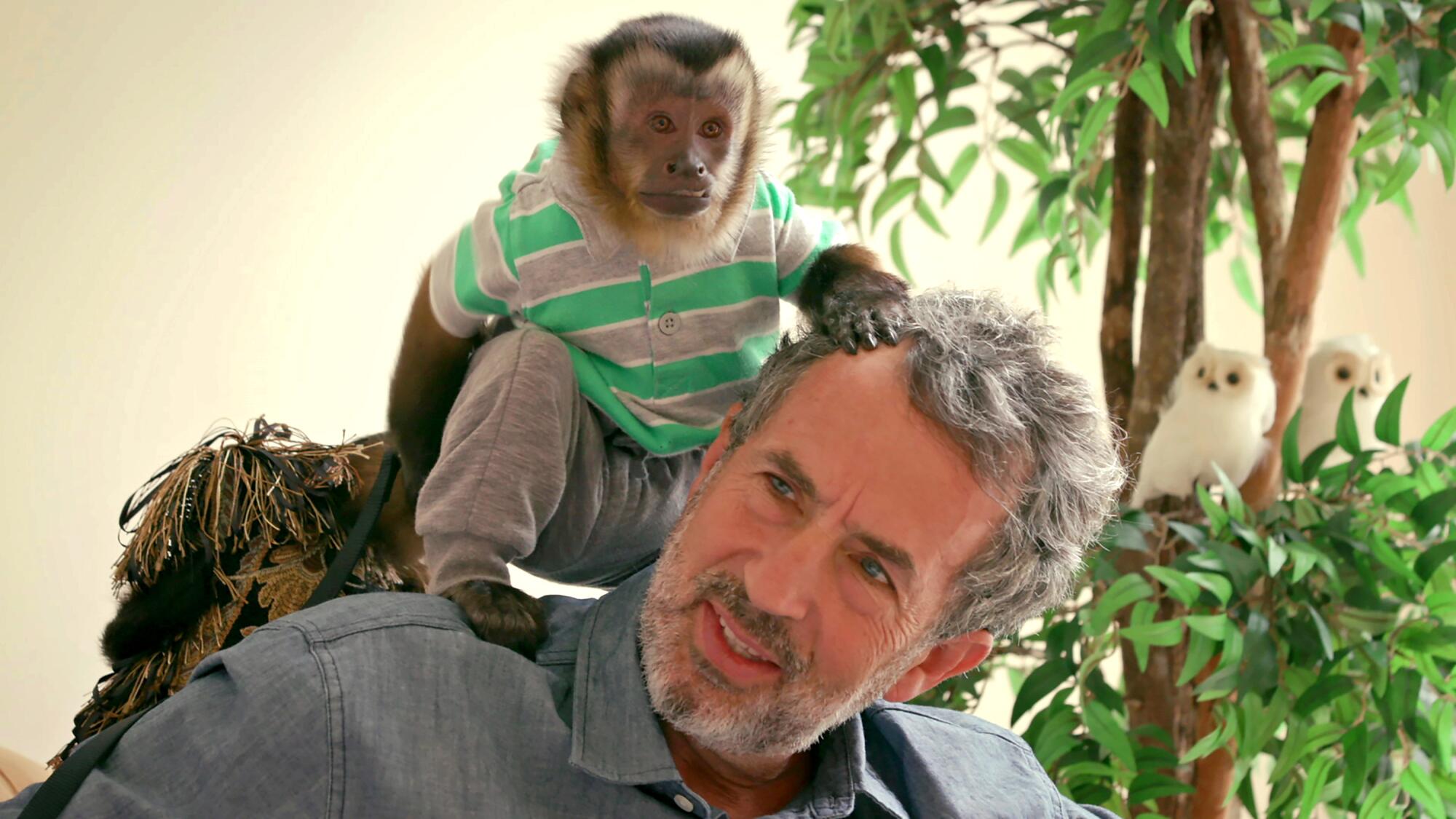
Goode during the filming of “Chimp Crazy.”
(HBO)
Using his own money, Goode began bringing a small professional production crew along on his travels with the aim of making a project about the extinction crisis. CNN got wind of the footage and committed to shooting a pilot for a TV series. The network ultimately passed on the show in 2019, but after “Tiger King,” Goode started to revisit some of the topics he’d been interested in for his next project.
“We were looking at bushmeat markets in Southeast Asia, female trophy hunters, butterfly collectors,” said Jeremy McBride, Goode’s producing partner. “We wanted to explore this broader theme of individuals’ relationships with exotic animals.”
That’s when things started heating up at the Missouri Primate Foundation. The facility’s owner, Connie Casey, bred chimpanzees that starred in movies, appeared on Hallmark greeting cards and appeared at children’s birthday parties — including a chimp named Travis, whom she sold for $50,000 when he was an infant, and who went on to attack a Connecticut woman named Charla Nash in 2009, ripping out her eyes, nose, lips and nine fingers.
After receiving a dozen citations from the U.S. Department of Agriculture, Casey was sued in 2017 by People for the Ethical Treatment of Animals, which claimed she had violated the Endangered Species Act. That’s when Haddix, trying to purchase a chimp, learned about Casey’s struggles and agreed to take legal ownership of the animals in the hopes of helping her new friend evade trouble.
But PETA did not relent. In 2020, the organization negotiated an agreement with Haddix that stipulated she could keep some chimps on the Missouri property if she renovated and expanded their facilities.
It was in the midst of this legal back-and-forth, in June 2021, when Haddix received a phone call from Dwayne Cunningham.
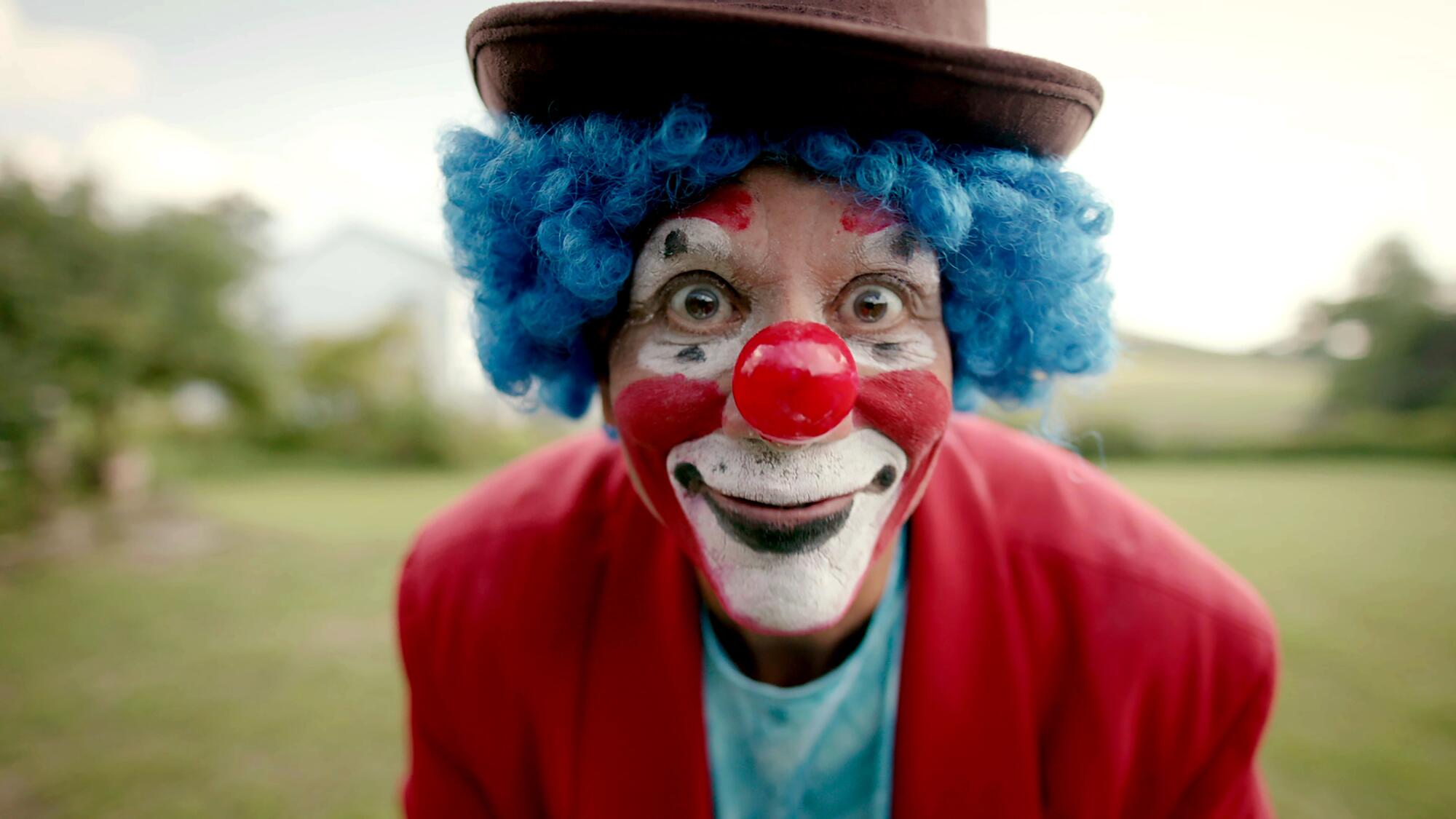
“Don’t ever say anything to me that you don’t want the whole world to know,” Dwayne Cunningham, “proxy director” and a former Barnum & Bailey clown, says he told Haddix. “And Tonia being Tonia, she just kept talking.”
(HBO)
Goode brought in the former Barnum & Bailey circus clown, who was sentenced to 14 months in federal prison in 1999 for trafficking tortoises and endangered iguanas, to be his liaison to the reclusive Casey, who hadn’t granted an interview to anyone since the journalist Peter Laufer for his 2010 book, “Forbidden Creatures.” If she was going to talk to anyone, Goode surmised, it would more likely be a guy whose “livelihood was also shut down because of animal rights groups” than the guy who made “Tiger King.”
Cunningham was open to the assignment because, as an animal lover, he wanted to see with his own eyes if the chimps were truly being mistreated. Likewise, Goode couldn’t forget what Laufer — a friend who is also on the advisory board of his Turtle Conservancy — told him about his time in Missouri.
“Peter described it as being so horrific — that he’d done prison interviews and been in civil wars, and nothing prepared him for it,” says Goode. “What made me feel like it was worth it, morally and ethically, was the knowledge I had about what was going on inside that house. I thought: ‘You know what? The end justifies the means, in this case.’”
The plan worked — sort of. Though Casey never agreed to an interview, Cunningham did win over Haddix. She later told Rolling Stone that she agreed to be part of the project because Cunningham was “a big animal person” who “would even come out early just so he can help bottle-feed some of our baby hoofstock.”
With her collection of wigs, eyelash extensions and spray-tanned body, the 54-year-old made for a visually intriguing subject. Plus, she was forthcoming, admitting to the cameras that she cared more about Tonka than her own human son.
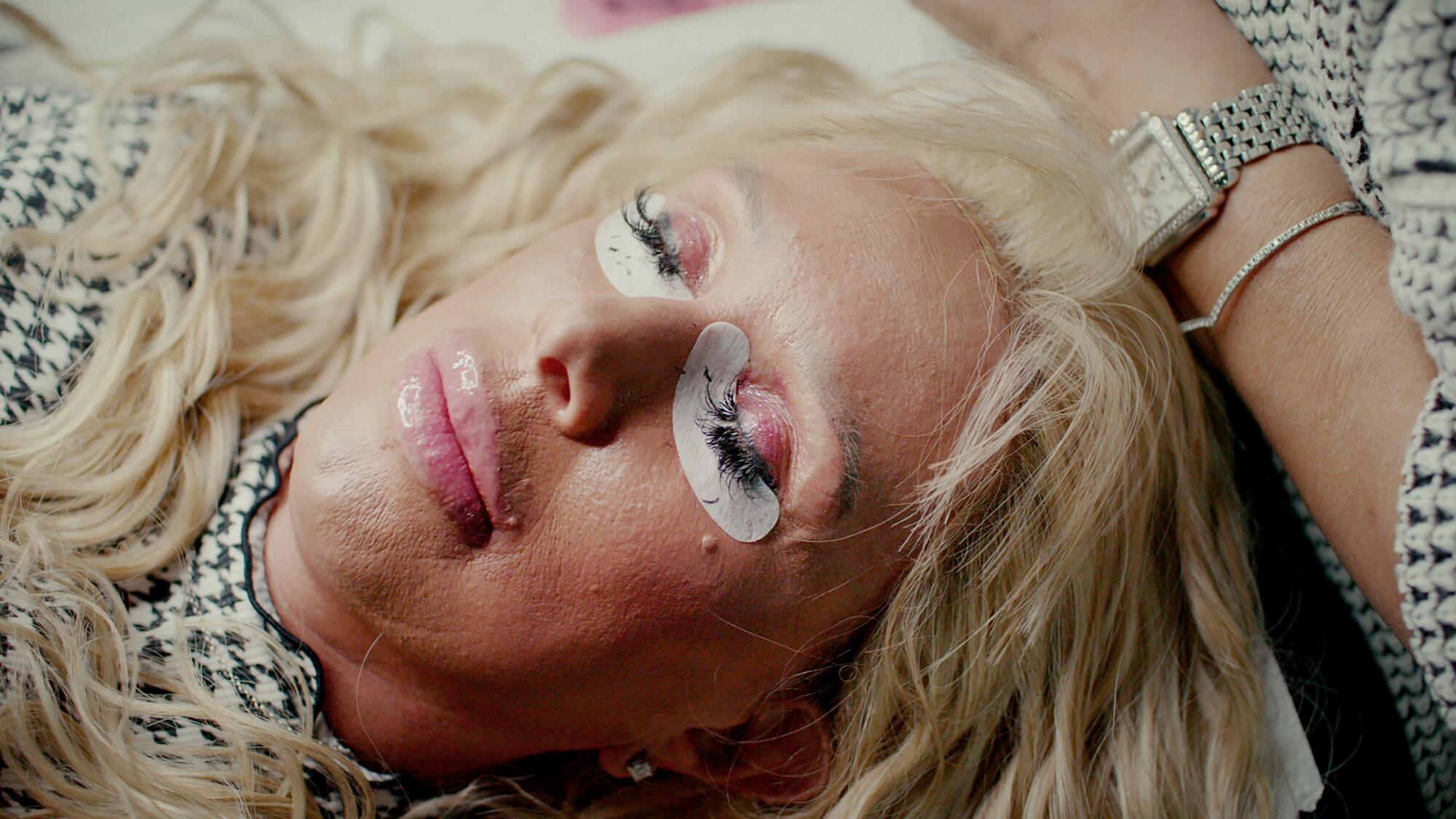
Haddix’s use of eyelash extensions, lip filler and other cosmetics are a key part of her depiction in the docuseries.
(HBO)
Just days after the film crew arrived in Missouri, a judge ruled that all seven of the chimps who lived there would be sent to a Florida ape sanctuary because Haddix had not renovated the habitat to the standards previously agreed upon with PETA.
But when local sheriff’s deputies and the U.S. Marshals Service arrived at the Missouri property to seize the seven chimps on July 28, 2021, they found only six animals. Haddix told them the missing primate, Tonka, had died on May 30 from heart failure.
As “Chimp Crazy” reveals, however, Haddix had sneaked her most beloved chimp to a friend’s house in Ohio. From there, she moved Tonka to her home near the Lake of the Ozarks, where she had outfitted her basement with a cage.
Almost immediately after kidnapping Tonka, Haddix let the documentary crew in on her secret. But she still did not know that Goode was behind the project — something he was increasingly “not fully comfortable with,” he acknowledges. “I don’t want to be that kind of person. I just kept thinking, ‘When is the right time to tell her that this is me?’ I always kind of thought it could have been sooner.”
The crew, meanwhile, was growing concerned. Haddix was in the dark, and now they had unwittingly become accessories to a crime. Alan Cumming, who starred with Tonka in the 1997 film “Buddy,” teamed up with PETA to offer a $20,000 reward for information about the chimp’s whereabouts. Cunningham, who is referred to as a “proxy director” in the series, says he and some camerapeople raised these issues with their bosses.
“I’m sure it was hard for the crew to have to understand that maybe there’s a greater good in not acting so quickly,” Goode says. “It was a very unsettling period. I was talking to my primatologist friends and saying, ‘If I don’t do something, is this chimp going to be OK?’”
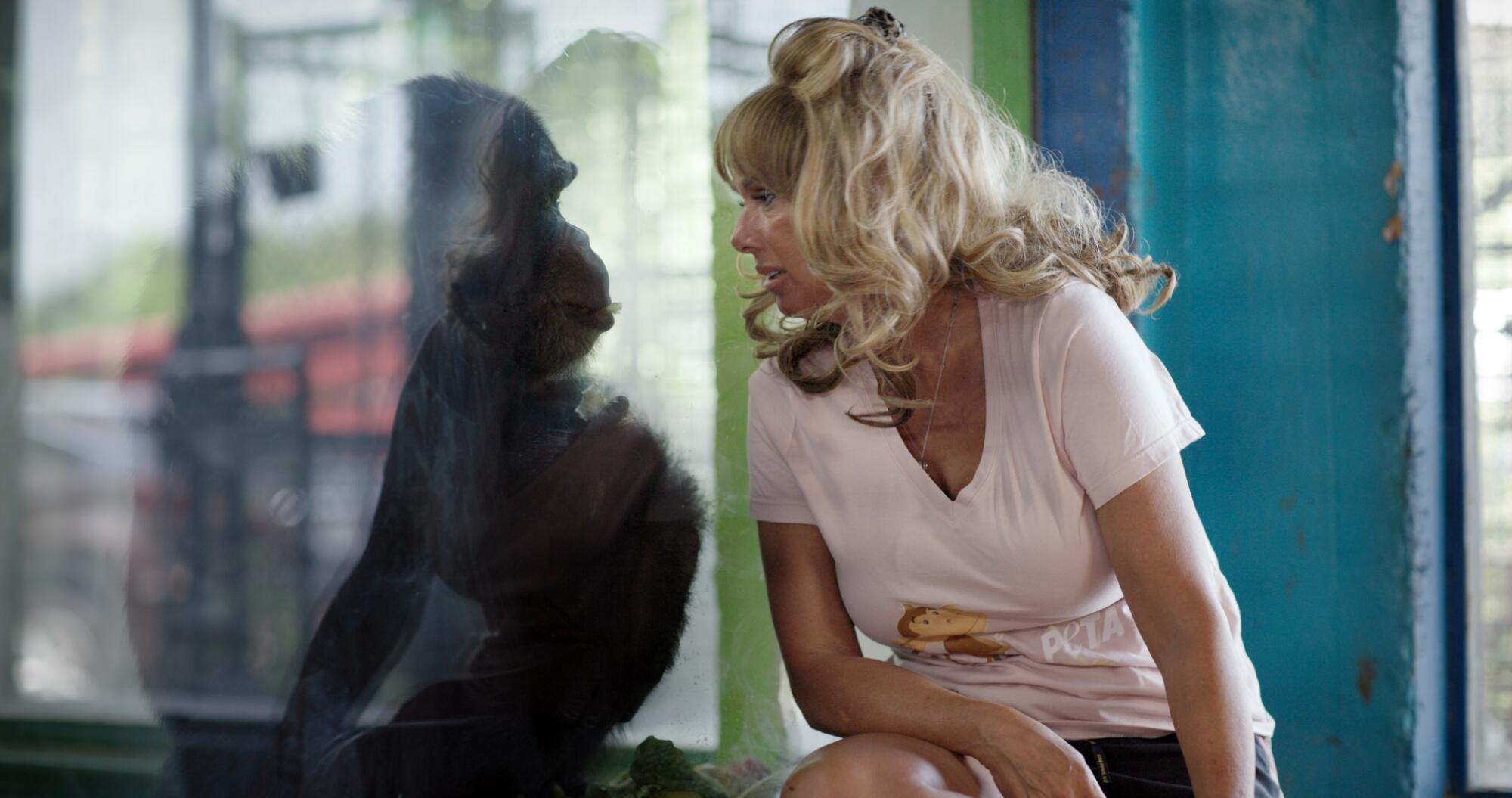
Haddix with Tonka the chimp.
(HBO)
Goode shared video of Tonka from the basement with the scientists, who attempted to identify physical tics that indicate mental distress. Cunningham shared his own observations of the chimp with Goode: Tonka was clean. He wasn’t having anxiety attacks. Yes, Tonia occasionally fed him Happy Meals or Powerade, but “he was always loved,” Cunningham says.
In May 2022, Haddix confided to Cunningham that she planned to euthanize the chimp; she said the animal’s veterinarian told her Tonka was so unwell it was cruel to keep him alive. Cunningham notified Goode, who decided it was finally time to tell PETA where Tonka was.
The producers called PETA on May 30, 2022, and requested an in-person meeting. The next day, they met with the organization’s lawyers. On June 1, PETA filed an emergency motion to remove Tonka from Haddix’s care.
“We would have wanted to know the moment the filmmakers found out that Tonka was in Tonia’s basement,” says Brittany Peet, the PETA Foundation’s general counsel for captive animal law enforcement. “I’m incredibly grateful that they did ultimately loop us in so we were able to get Tonka out. I don’t think that every documentary filmmaker would have made the choice that they did, called us and risked their project to save a life.”
In the days leading up to Tonka’s removal on June 5, 2022, Haddix was still in the dark about who had revealed her secret. She confessed as much to Cunningham, who wore a hidden camera when he went to talk to her during that period.
“I didn’t feel guilty,” Cunningham insists. “I always said to Tonia, ‘Don’t ever say anything to me that you don’t want the whole world to know.’ And Tonia being Tonia, she just kept talking. So I didn’t feel guilty; I felt like I was doing my job. But I felt bad for a friend, because I could see that the love story was spiraling out of control.”
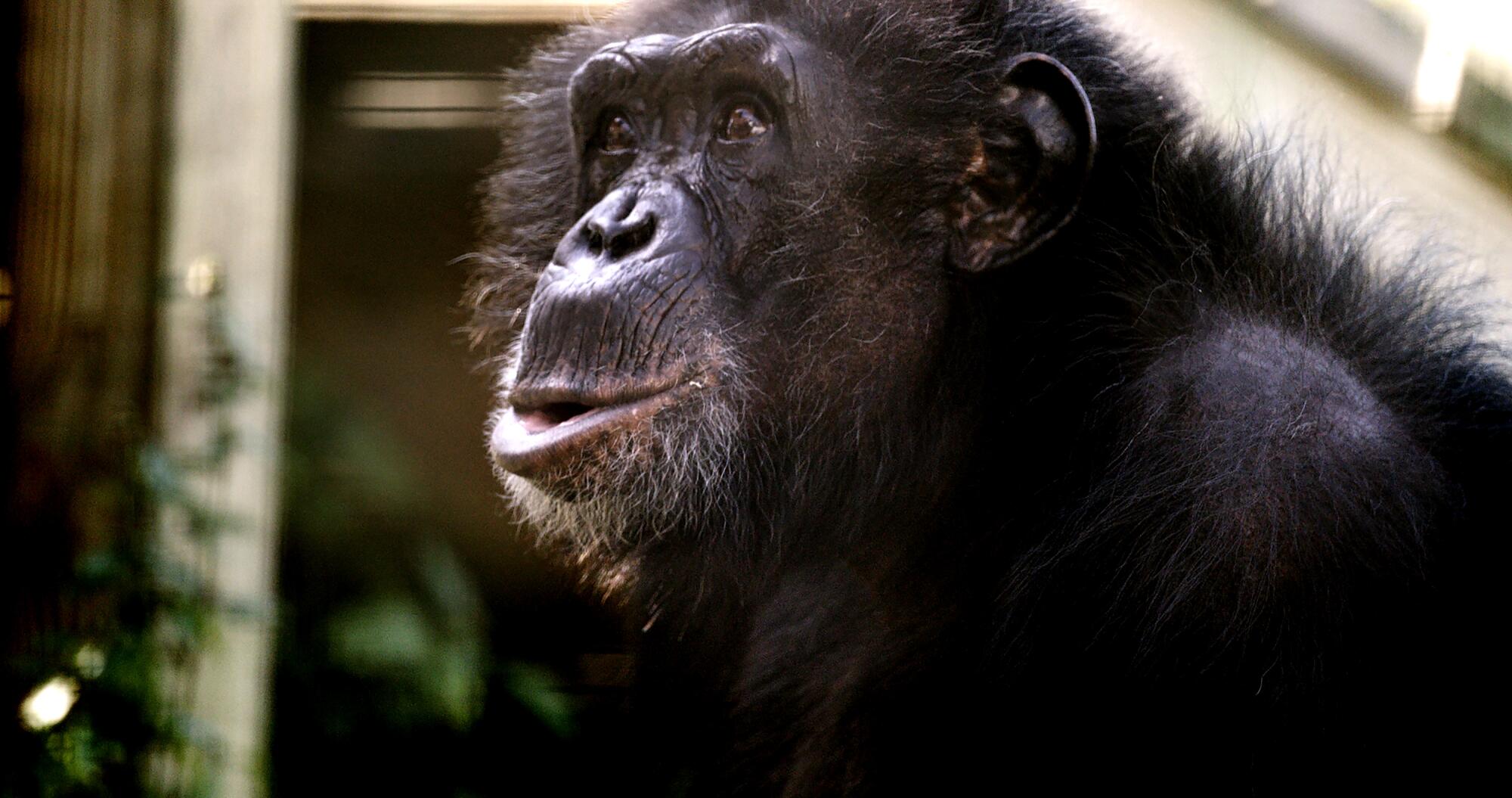
When he learned Tonka was hidden in Haddix’s basement, Goode says he wondered, “If I don’t do something, is this chimp going to be OK?”
(HBO)
When he eventually met Haddix, Goode began by telling her that he related to her. “There are certain animals,” he says in the series, “that if people took them away from me, I would be very, very upset.”
He was referring to the chelonians he keeps on his Ojai property, where approximately 40 endangered species of turtles or tortoises live. While he says he does like being around them for “selfish reasons,” the animals reside in Southern California because they’re either extinct in the wild or so endangered that poachers pose a critical risk to the remaining population. “I don’t want to say I’m, like, trying to create a loophole for why I can keep a tortoise and someone can’t keep a chimp,” he says. “It would certainly be better to keep our animals in the wild, just because the environmental conditions are very hard to replicate.”
Goode has been a controversial figure in conservation circles. Craig Stanford, a human evolutionary biologist who has led USC’s Jane Goodall Research Center, says his colleagues often question his association with someone who directed something “really trashy” like “Tiger King.” (He is on the Turtle Conservancy’s Board of Directors and sat for a “Tiger King” interview that was eventually cut.)
“How dare you capitalize on these gorgeous, endangered animals to make millions?” Stanford says, describing his peers’ criticism. “I say, ‘Well, OK, yes, but he did shine a light, and it did lead to stricter regulations. And he did donate some of the proceeds from it to a very good cause.’” (Goode says he and two other “Tiger King” partners donated $1 million of the series’ proceeds to a program for tigers in the wild in India.)
Such judgments are enough to make Goode wish one of his other, non-animal-centric projects — such as a documentary he recently shot about his late mother — was being released before “Chimp Crazy.” “That way, people wouldn’t think I’m just using this model of ‘Tiger King’ and that’s all I can do,” he says.

Goode says he hopes “Chimp Crazy” doesn’t leave audiences thinking he’s “using this model of ‘Tiger King’ and that’s all [he] can do.”
(Emil Ravelo / For The Times)
Haddix, he says, has been having a difficult time with the film’s release. A few weeks ago, Cunningham traveled to St. Louis to screen all four episodes for her. After she watched the first one, which features the most video of her with Tonka, he says she cried in his arms. Then there was silence. “I told her she had to get up off the couch because we had to move it back,” Cunningham says. “She started laughing, and that kind of broke the ice a little bit.”
They’ve continued to exchange text messages, as have Haddix and Goode. The director says Haddix requested a number of “Chimp Crazy” posters be sent to her so she could sign and sell them. In public, however, she seems to be presenting a different story. And that upsets Goode.
“She said that I offered her money so she would continue to film with me, or guaranteed she could go see Tonka — both of which are absolutely, categorically not true,” he says, noting that the production did pay her for use of some archival footage.
The way Goode sees it, Haddix would have been caught eventually, with or without him. By her own admission, she told friends, family and neighbors that Tonka was in her basement.
“So yes, we are the bad guys — we turned her in. But I think that was inevitable,” he says. “I just try to use the moral compass that my mother gave me in life. I don’t know where that falls, but there definitely is one.”

Movie Reviews
New Francis Ford Coppola film trailer axed for using fake movie reviews
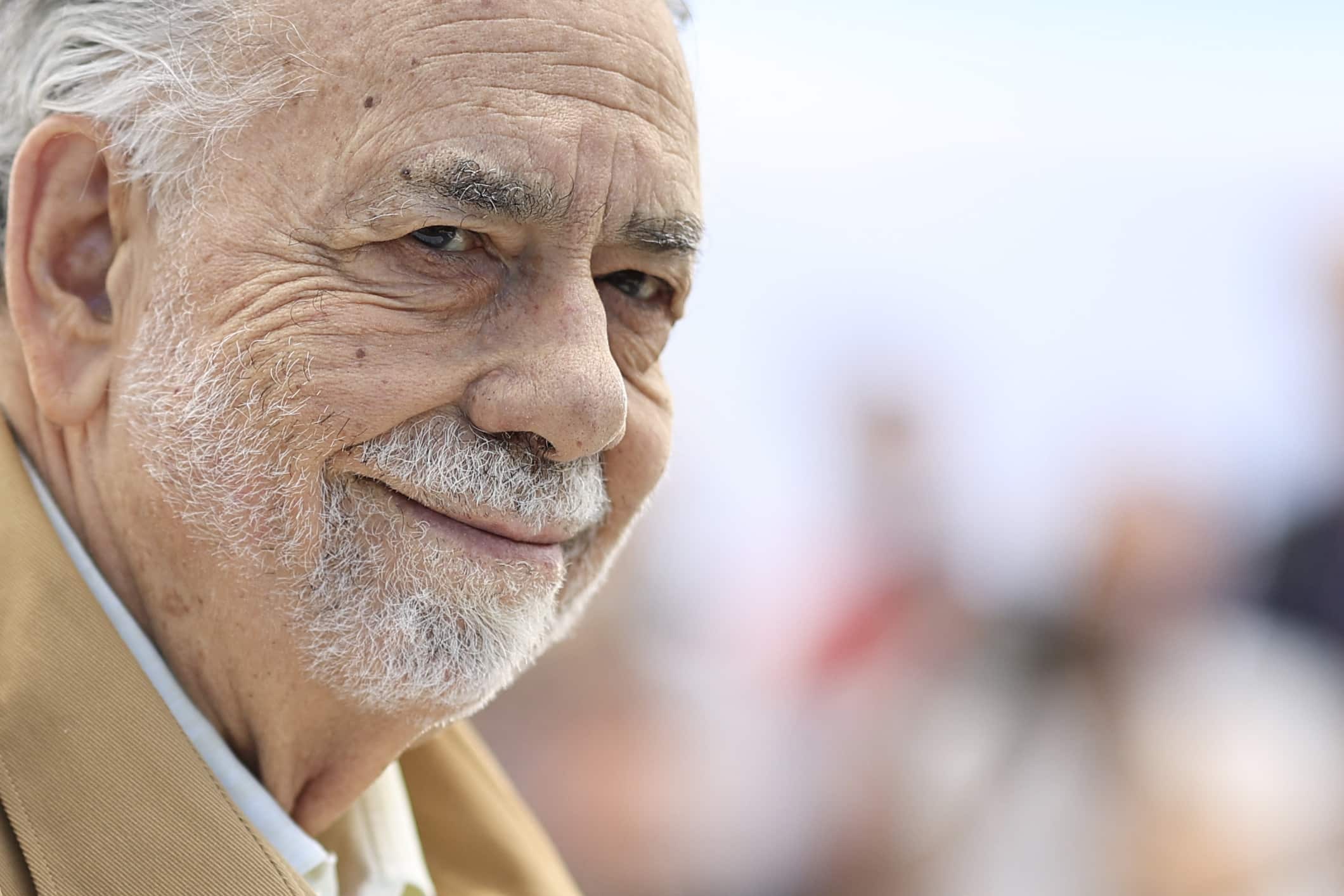
US director Francis Ford Coppola poses during a photocall for the film “Megalopolis” at the 77th edition of the Cannes Film Festival in Cannes, southern France, on May 17, 2024. (Photo by Valery HACHE / AFP)
A trailer promoting Francis Ford Coppola’s new film “Megalopolis” has been withdrawn after it was found to have incorporated fake movie reviews, reportedly generated by artificial intelligence.
Coppola’s wildly ambitious, decades-in-the-making movie, which hits theaters next month and stars Adam Driver, has starkly divided critics.
A trailer released this week drew parallels to earlier works by the revered Hollywood director that also initially left some professional reviewers cold before going on to become classics — suggesting “Megalopolis” can do the same.
“True genius is often misunderstood,” a voiceover began, before quotes from famous critics calling “The Godfather” a “sloppily self-indulgent movie” and “Apocalypse Now” a “spectacular failure” were presented on the screen.
The problem? None of those quotes were real.
Instead, the trailer appears to have used AI-generated imitations of the type of withering put-downs associated with renowned reviewers such as Pauline Kael.
In at least one case, a criticism appears to have been lifted from a review of an entirely different film
The trailer was quickly recalled, with Hollywood studio Lionsgate offering “our sincere apologies to the critics involved and to Francis Ford Coppola” for an “inexcusable error in our vetting process.”
“We screwed up. We are sorry,” said a statement.
Lionsgate has since parted company with the marketing consultant behind the trailer, trade outlet Variety said Friday. Meanwhile Deadline reported that the quotes were generated by AI.
The furor comes at a time when Hollywood is roiled by the encroaching impact of AI. Fears the technology could replace entertainment industry jobs — from actors to writers — were central to last summer’s devastating strikes.
The trailer episode is just the latest controversy to hit “Megalopolis,” an already hugely divisive epic.
Legendary director Coppola has said he spent $120 million of his own money to make the film, selling a stake in his California vineyard.
But its much-hyped world premiere at the Cannes Film Festival left the industry confounded.
Critics’ responses ranged from “a true modern masterwork” to a “catastrophe.”
Driver stars as a seemingly magical architect whose efforts to rebuild a decaying city into a futuristic utopia are thwarted by its resentful mayor (Giancarlo Esposito).

US actor Adam Driver (L) and US director Francis Ford Coppola pose during a photocall for the film “Megalopolis” at the 77th edition of the Cannes Film Festival in Cannes, southern France, on May 17, 2024. (Photo by Valery HACHE / AFP)
The movie also stars Aubrey Plaza, Shia LaBeouf and Dustin Hoffman.
It receives its North American premiere at the Toronto film festival next month, before being released in US theaters on September 27.
The controversy has provoked theories among some Hollywood observers that the entire unseemly debacle could have been staged to provoke headlines.
Lionsgate did not respond to an AFP request for comment.
But a source familiar with the marketing plan told AFP the studio did not deliberately fabricate the quotes, and removed the trailer as soon as it became aware of the situation.
Movie Reviews
1984 Movie Reviews – Cal, Old Enough, Oxford Blues | The Nerdy
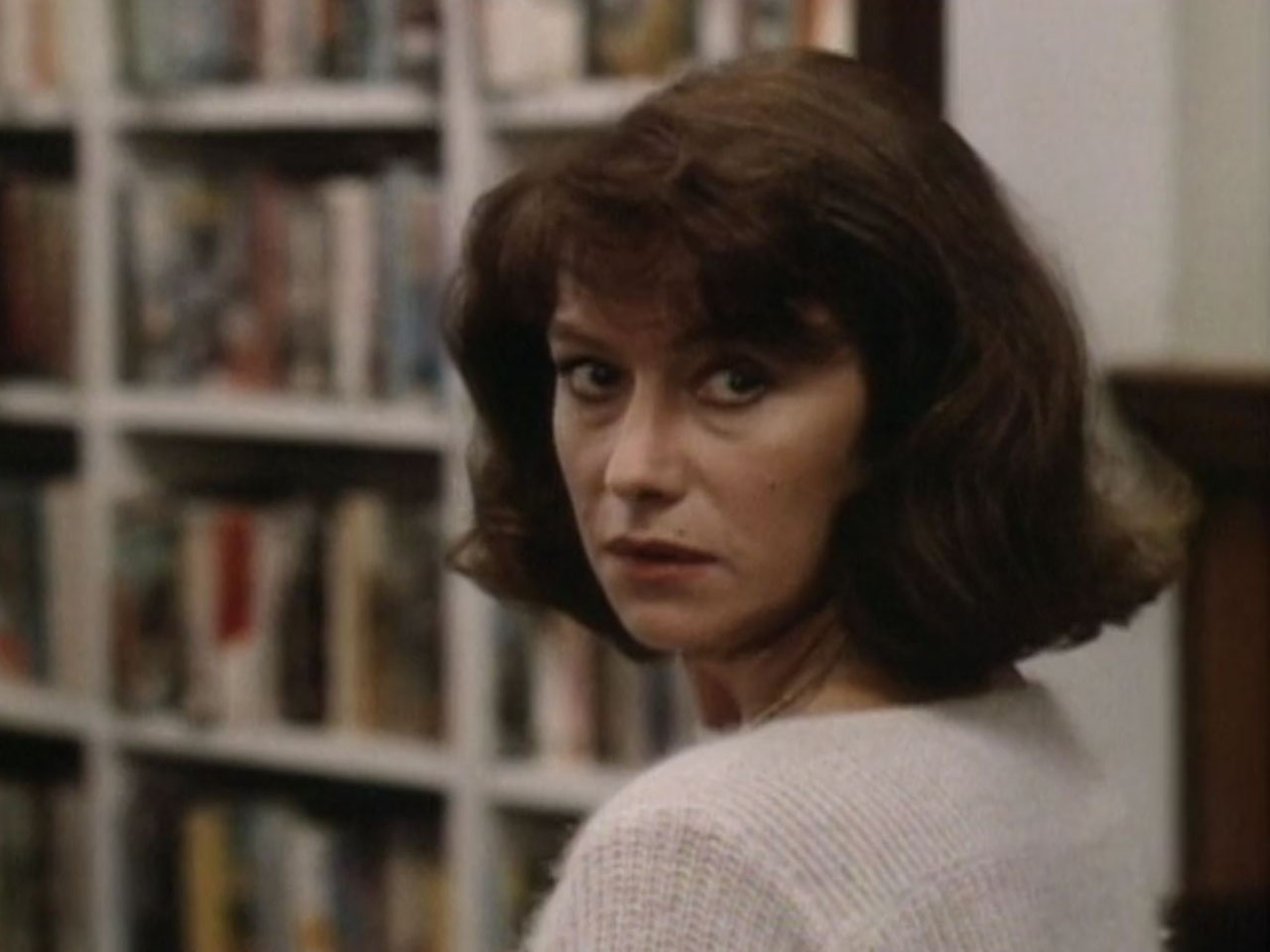
Welcome to an exciting year-long project here at The Nerdy. 1984 was an exciting year for films giving us a lot of films that would go on to be beloved favorites and cult classics. Imagine a world where This is Spinal Tap and Repo Man hit theaters on the same day. That is the world of 1984.
We’re going to pick and choose which movies we hit, but right now the list stands at nearly three dozen.
Yes, we’re insane, but 1984 was that great of a year for film.
The articles will come out on the same day the films hit theaters in 1984 so that it is their true 40th anniversaries. All films are also watched again for the purposes of these reviews and are not being done from memory.
This time around it’s August 24, 1984, and we’re off to see Cal, Old Enough, and Oxford Blues.
Cal
A film about the IRA and its complicated relationship with its countrymen, as well as the anger between Protestants and Catholics in Ireland, was a weird place to set a love story, but that is precisely what Cal is.
Cal (John Lynch) is adrift in life. He has trouble finding work, and relies on his father, Shamie (Donal McCann) for everything. What Shamie doesn’t know, however, is that not only is his son wrapped up with the IRA, but he even assisted in the murder of a policeman. A year later, he unknowingly runs into the policeman’s widow, Marcella (Helen Mirren), and is enthralled by her.
Cal’s life from that point forward is a mixture of bliss and tragedy until the film arrives at its rather odd conclusion that I won’t spoil for anyone.
It’s well acted, but the script is lacking in a lot of ways. The eventual resolution of Shamie’s story happens completely off-screen and almost feels like the actor left the set for some reason.
Then, there is the lighting of the film. While I understand setting a mood, large portions of night shots felt as though they were lit with two drug store flashlights that had been dropped in the mud, and no one had cleaned them off. It is a muddy mess that is incredibly difficult to follow at times.
Overall, it’s a fine film, but not one I can ever imagine me spending a second thinking about ever again.
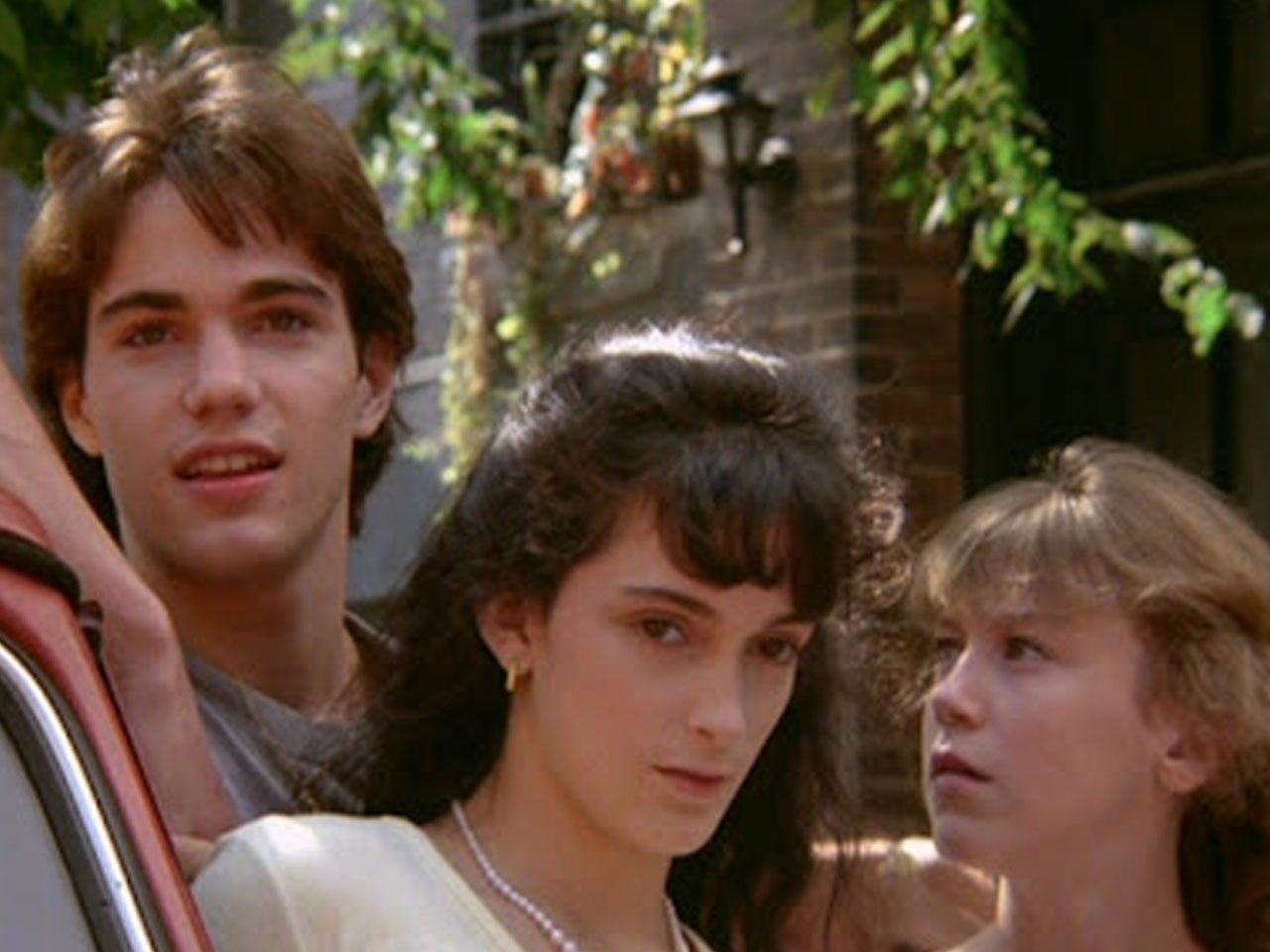
Old Enough
I knew absolutely nothing about this film going into it, and lucked out that I walked away pleasantly surprised.
Lonnie (Sarah Boyd) is the 11-year-old daughter of a well-off family in New York City who ends up meeting and befriending 14-year-old Karen (Rainbow Harvest), the daughter of a family that struggles to get by, one summer. Over the course of the summer break, both of them find different ways to expand the life experiences of the other while also coming of age. They have their ups and downs, but both come out of the experience better for it.
Both girls turn in excellent, believable performances. They are not perfect, but they are enjoyable watch.
The only major issue I had with the story was the constant attempts by Karen’s older brother, Johnny (Neill Barry), to sleep with Lonnie. Yes. Things such as that happen, but it was still uncomfortable to watch it.
It’s a fun little, unassuming movie, that’s not a bad time if you’re looking for a slice of teenage life pre-technology.
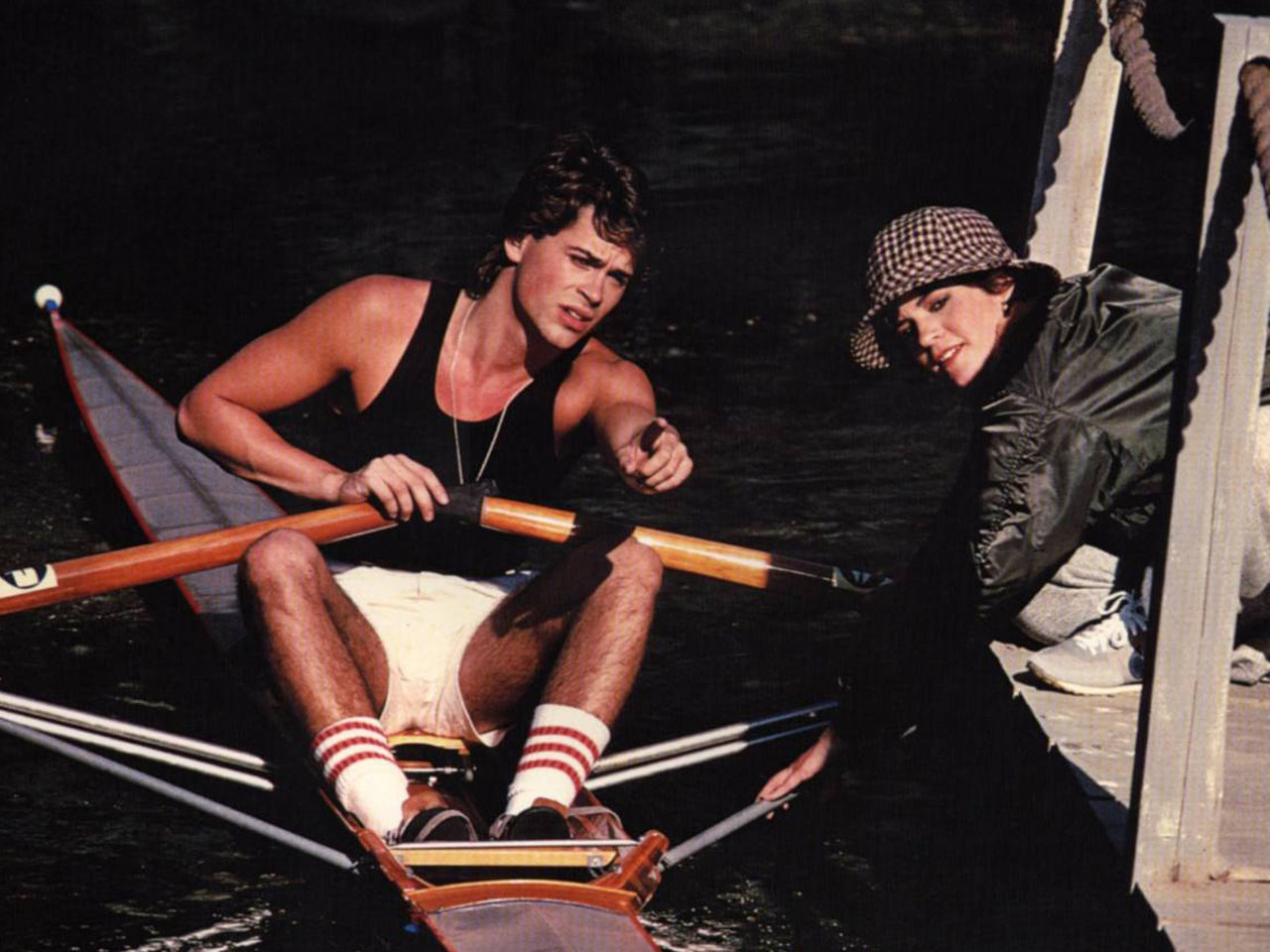
Oxford Blues
I would love to tell you what Oxford Blues was about, but I’m not sure the people who made it knew themselves.
Nick Di Angelo (Rob Lowe) wants to go to Oxford University, not because an incredible rower, but because he wants to meet and woo Lady Victoria Wingate (Amanda Pays). After a bit of a turn as a gigolo, he makes it there and sets his sights on Victoria, while also befriending Rona (Ally Sheedy), setting up a rivalry with Colin Gilchrist Fisher (Julian Sands), getting into trouble with the school, learning the value of teamwork, and, I guess, going to class.
The movie hits on so many college film tropes that it’s as if someone put several movies in a blender, and Oxford Blues popped out. At the very end of the film, after only the most tenuous examples of Rona and Nick having feelings for one another, they kiss. Nick looks at Rona and says, “Why didn’t we ever do that before?” Rona replies, “I don’t know.”
Don’t worry fictional characters, the audience didn’t know either.
If you have time for only one 80s college film, I guess make it this one as it will serve essentially as the Cliff Notes for all of the rest of them.
1984 Movie Reviews will return on August 31 with Choose Me, Bolero, C.H.U.D., and Flashpoint!
Entertainment
How Intocable's Grammy-winning sound began with dreams, a cow and imagination
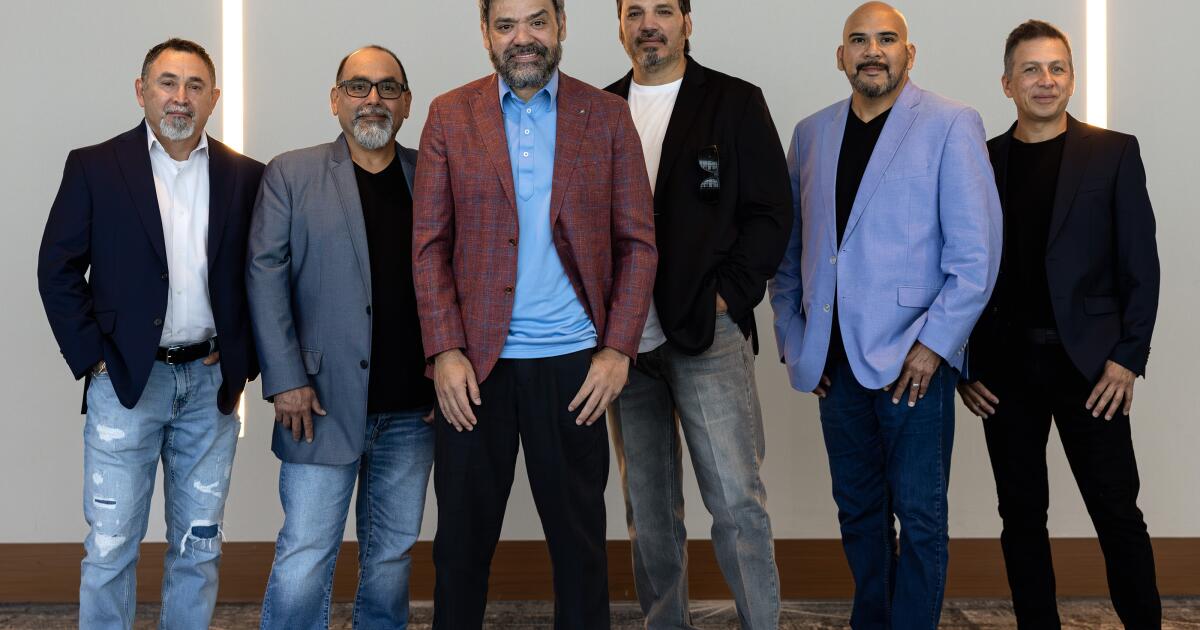
How does a legendary band in the highly competitive field of norteño music celebrate three decades of non-stop hitmaking?
Most would be perfectly content with a lavish anniversary tour across Mexico and the U.S., and that’s exactly what Intocable is doing. But the six musicians from Zapata, Texas, took an extra step: Earlier this year, they released “Modus Operandi,” Intocable’s most ambitious and adventurous album to date.
“We never intended to appear daring or rebellious,” says Ricky Muñoz, the band’s singer and accordionist, when asked about the radical sound of the band’s latest effort. “The idea was to make an album that felt comfortable to us. Let’s enjoy the moment and free ourselves. Let’s make the kind of music that will please the inner children still living in our hearts.”
It’s a blistering afternoon in downtown L.A., and Intocable is about to hold a press conference at the Grammy Museum, where the group will donate an accordion to the institution’s permanent collection. We’re in the lobby of a luxury hotel, steps away from the rooftop event, but in keeping with the humble ethos of most norteño musicians, our interview setup is entirely improvised. After looking around, a couple of chairs are borrowed.
We sit in an empty hallway — the six musicians side by side, including René Orlando Martínez, drums; Sergio Serna, percussion; Johnny Lee Rosas, second vocals; Alejandro Gulmar, bajo sexto; and Felix Salinas, bass. They form a horizontal line, listening intently to each other as they dissect the bold sonics of the new record.
“Sure, we play the instruments of a typical norteño conjunto,” reflects Muñoz. “Our music, however, is anything but.”
When Muñoz’s grandfather sold a cow so that he could afford a brand new accordion for his nieto, he probably never imagined that he was investing in a future norteño powerhouse. But Mexican music wasn’t the only influence that Muñoz and his bandmates grew up with.
“Being from a small town strengthened our imagination,” says Muñoz, a nostalgic tinge in his eyes. “We couldn’t see Van Halen live — they would never make it to Zapata, of course — but we spent a lot of time imagining what it would be like to see them in concert.”
Intocable’s musical influences can easily be traced back to the ‘60s, ‘70s and ‘80s.
“No matter what people may say, we happened to grow up listening to music from the best decades,” adds Martínez. “We’re from a small town, and relied on MTV and the ‘Night Tracks’ television show to discover new music. But the influence was huge.”
From its inception, Intocable blended norteño with the slick sheen of commercial Latin balladry (think Camilo Sesto, or Leo Dan), gaining millions of fans in the process. But the songs on “Modus Operandi” — and the production by veteran helmer Don Was, of Rolling Stones and Bob Dylan fame — betray a deep and precise kinship with mainstream pop-rock, from the Beatles and Led Zeppelin to Foo Fighters.
This progressive bend — highly unusual for a genre that tends to reward the comforts of a conservative aesthetic — is not entirely new. On the band’s 2019 album “Percepción,” the track “Tu Soledad y la Mía” begins with the hum of an electric guitar and a rock ’n’ roll drum fill. When the first chorus segues into an accordion solo, Muñoz takes off into wondrous new directions. His melody twists and spirals, a haunting, timeless lament that would feel at home in many different styles and settings.
“I remember exactly how that solo came to be,” he says with a smile. “Johnny and I were at the rancho in Texas, working on the melody, and as he played the last note of his guitar, I thought of Nirvana — those passages where they switch to a minor key and everything is transformed. That kind of influence is always there, although on an unconscious level.”
A similar solo graces “Obsesión,” the opening track of the new album, a previously unreleased original by Argentina’s Leo Dan — master of the baroque ballad. The band also delved into musical archaeology on the title track, “Modus Operandi.”
“We were in the studio with Don Was, who doesn’t speak a lick of Spanish, and the original version of the tune wasn’t really working out,” Muñoz remembers. “Then Johnny brought out a riff — the first riff he ever played, when he was 13 and got his first guitar. That’s what ended up on ‘Modus Operandi.’ This kind of detail may sound fractious compared to where this genre stands right now. To us, it’s normal.”
There’s nothing normal about “Sin Morir (No Puedo),” either. A self-professed “bonus track” at the tail end of the album, it is a brief majestic ballad anchored to Muñoz’s vocals, lilting acoustic guitar, and a lush string section arranged by David Campbell — Beck’s father.
“This is why we went independent and have our own record label,” adds Martínez. “We have nothing to prove now. We have only ourselves to satisfy — not the needs of an accountant.”
Intocable’s 30th anniversary tour began in July in Hermosillo, and will conclude in December with two dates in Monterrey. Los Angeles, Las Vegas and many Texas cities are also part of the trek.
I ask Muñoz if the band feels invigorated by the current surge in música mexicana spearheaded by global stars like Peso Pluma.
“I can’t give you an informed opinion, because I don’t really listen to those artists,” he admits. “Young musicians have access to new tools that allow them to promote their music. But I don’t even know what instruments they play, or how their songs are made. It’s like if you asked me about hip-hop. I know it’s a major force in pop culture, but I haven’t been influenced by it.”
Muñoz lights up when asked about the band’s next step. After such a transcendent album as “Modus Operandi,” does the prospect of returning to the studio feel daunting?
“Eventually we’ll have to address the elephant in the room and go back,” he says. “We have no idea what will transpire. Usually we start jamming, and then an unexpected moment takes place. When that happens, you better press the Record button, because that moment of inspiration will fade away just as swiftly as it arrived. Next thing you know we’re sitting here talking about the experience, and you don’t really remember how it all happened.”
“Art takes time,” Muñoz adds. “We don’t paint houses here. We are painting the ‘Mona Lisa.’ ”
-

 Minnesota1 week ago
Minnesota1 week agoReaders and writers: Plenty of thrills and danger in these Minnesota author’s mysteries
-

 Fitness1 week ago
Fitness1 week agoA Guide to Pottruck Health and Fitness Center
-

 Politics1 week ago
Politics1 week agoTrump assassination attempt: Secret Service makes big change to former president's outdoor rally security
-

 News1 week ago
News1 week agoVideo: Biden and Harris Announce Deal to Lower Drug Prices
-

 Technology3 days ago
Technology3 days agoBreakthrough robo-glove gives you superhuman grip
-
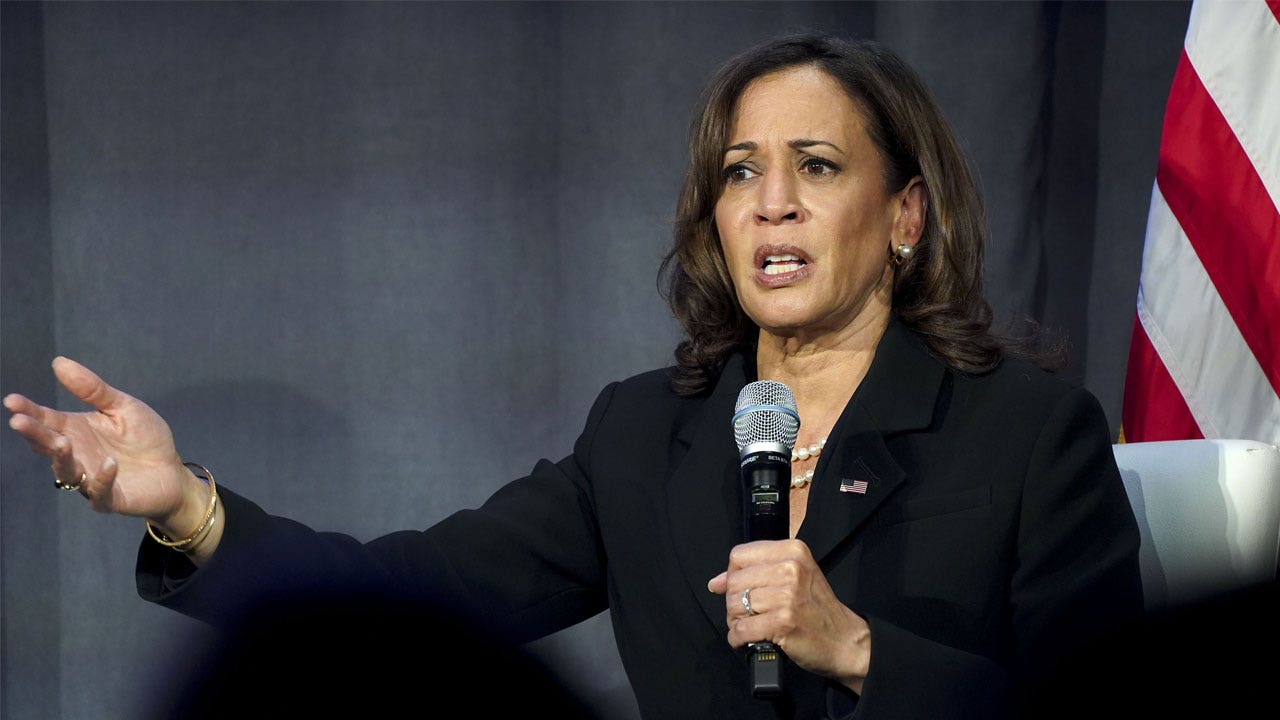
 Politics1 week ago
Politics1 week agoHarris camp silent on when VP will hold press conference as Trump preps to host his second in a week
-
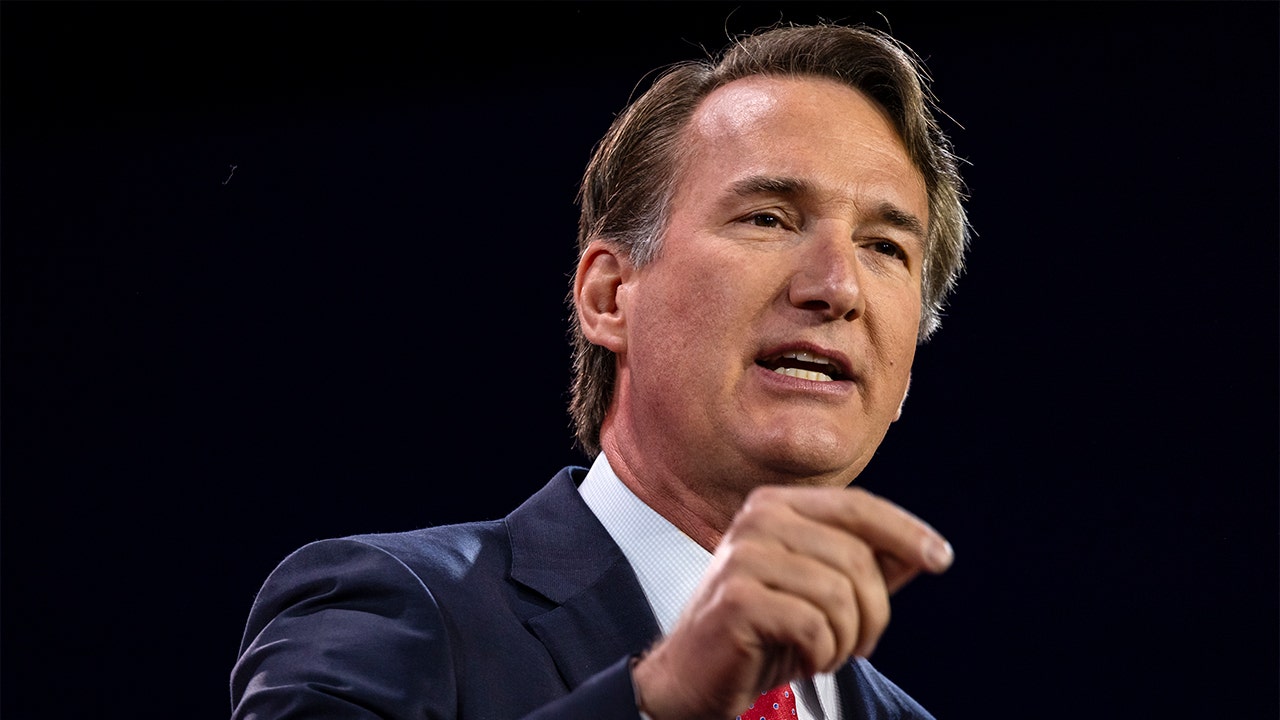
 Politics1 week ago
Politics1 week agoYoungkin takes victory lap against 'losing states' as Virginia marks $1B surplus: 'The playbook works'
-

 Politics1 week ago
Politics1 week agoHouse Oversight investigating Walz over 'longstanding connections' to China


